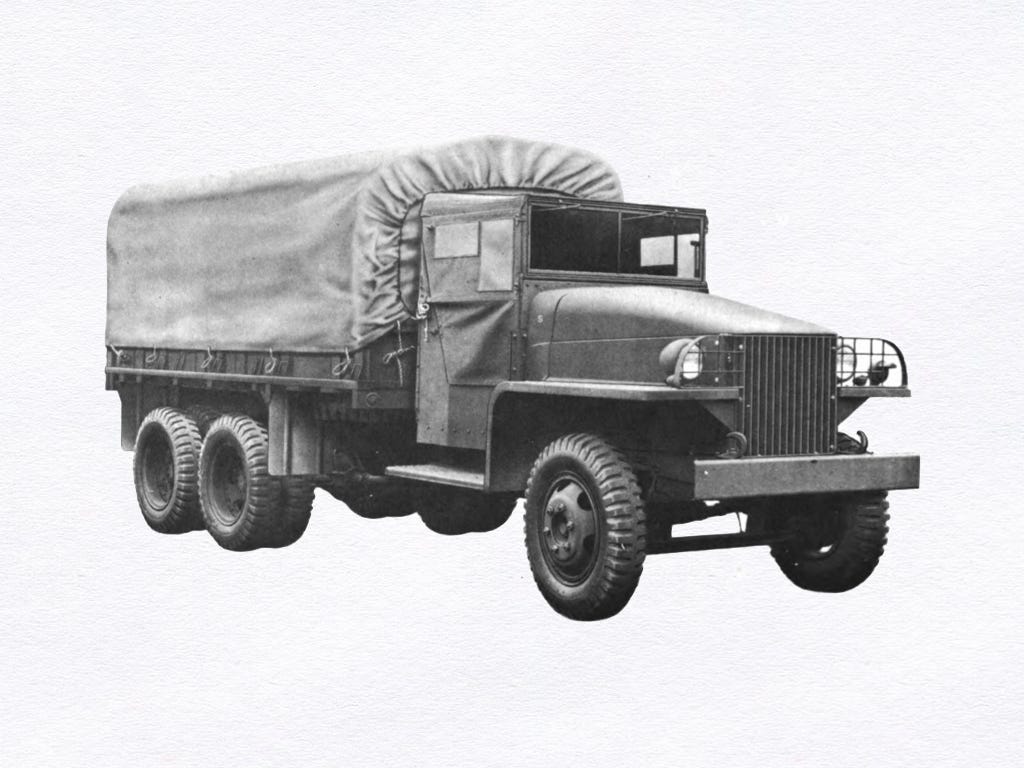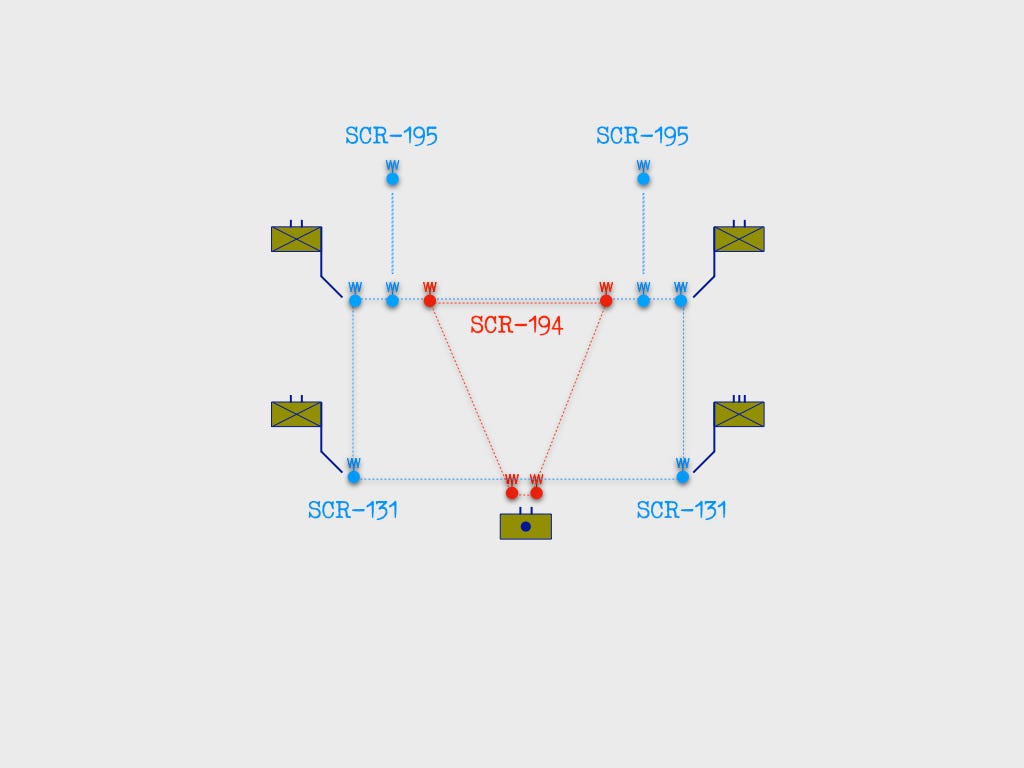Trucks and Radios of the US Army (1941-1945)
Battalion: An Organizational Study of United States Infantry
Welcome to the Tactical Notebook, where you will find close to five hundred tales of armies that are, armies that were, and armies that might have been. If you like what you see here, please share this article with your friends.
The estate of the late John Sayen has graciously given permission to the Tactical Notebook to serialize his study of the organizational evolution of American infantry battalions. The author’s preface, as well as previously posted parts of this book, may be found via the following links:
In 1941, the US Army introduced a number of new trucks. First, a 2.5-ton 6x6 truck that combined ruggedness with excellent off-road mobility and a considerable increase in payload would supplant the commercial 1.5-toners in most roles. Second, a newly designed 3/4-ton truck configured in either weapons carrier or “command and reconnaissance” versions would displace many existing 1/2-ton trucks.
Though the 1/2-ton trucks had themselves only been in service a short time, their numerous commercial components lacked durability. Also, their relatively narrow track width reduced their cargo space and gave them too high a silhouette. The 3/4-ton trucks had been designed from the start as military vehicles and were much more reliable and efficient in consequence. Lastly, an Army design competition for a 1/4-ton 4x4 tactical truck produced the famous “jeep.”
Although rated as a 1/4-ton vehicle, the jeep’s designed payload was actually 730-pounds, or just under 3/8-ton, and it could also pull a loaded 1/4-ton cargo trailer. Small and handy enough to replace sidecar motorcycles, the jeep’s seats suited it for the C&R role while its trailer allowed it to be a weapons carrier also. Originally intended only for limited use the jeep soon became one of the most ubiquitous vehicles in the Army. With some help from the 3/4-ton trucks, the jeeps (as soon as there were enough of them) would replace nearly all 1/2-ton trucks, motorcycles (except in certain airborne units), and five-passenger automobiles.
The first year of open American participation in the Second World War also saw the introduction of a number of new radios.
The smallest of these was the “ultra light” or “handie-talkie ” SCR-536. This was a hand held HF voice radio that resembled a large handset with an antenna. Weighing only about 5.5 pounds (without accessories), it was so simple to use that non-signalers could easily be trained to operate it. In many respects the SCR-536 was the most important of the new radios because it brought radio communication down to the platoon level.
On the debit side, the SCR-536’s dependable transmission range was only about a mile, though this was usually adequate for intercommunication within a company. It also had to be set to a fixed frequency that only a technician could adjust. Hence, SCR-536s belonging to one company (which would have its own internal radio net and frequency) could not communicate with those of another.
Even when technical assistance was available, the SCR-536 lacked the frequency range needed to communicate with other radio types, especially the “medium” or man-packed VHF radios. The earliest of these was the SCR-195, replaced early in the war by the SCR-511 and, later on, by the much-improved SCR-300. The SCR-300 “walkie-talkie” weighed about 38 pounds with its largest battery. The vehicle-mounted version was known as the AN/VRC-3. It could reliably transmit to about three miles and was normally used for battalion level communication. The “large” infantry radios consisted of the heavy long-range HF sets used for regimental and division level communications and able to send or receive voice or CW transmissions.
While usually mounted in vehicles they could be hand carried in multiple loads. Some could utilize hand generators for power and this capability was especially valuable in extremely cold or hot climates where batteries usually failed. Initially the large radios had consisted of the obsolescent SCR-131s and SCR-171s but the SCR-284 soon replaced them. This new set offered greatly superior range (30 miles in CW mode or seven in voice mode) while weighing only 80 pounds. However, later in the war the SCR-284 gave place to the SCR-694 which, though heavier (90 pounds in its ground version or 150 pounds in its vehicle version), could transmit out to 15 miles in voice mode or 30 miles in CW. It could even communicate with an SCR-536 if the operator adjusted it to the latter’s preset frequency. Although the new SCR-536, SCR-300, and SCR-284/694 extended radio communication within the infantry as never before, it was only well into 1943 that they became available in substantial quantities.
Advances in other types of communication gear were much less striking. Telephone equipment remained much the same although the quantities issued were increased to where the rifle and weapons companies could be included in battalion level phone nets. Hand flashlights with pushbutton flashers replaced signal lamps. Semaphore and panel signaling gradually fell into disuse.
Note: The diagram of the radios used by an infantry regiment and its supporting field artillery battalion has been simplified. In particular, the radios used by the anti-tank company have been left out.
Sources:
Thomas Berndt, Standard Catalog of U.S. Military Vehicles 1940-1965 (Iola: Krause Publications, 1993)
Bart H. Vanderveen The Observer’s Fighting Vehicles Directory World War II (New York: Frederick Warne, 1969)
“Infantry School Reference Data” Infantry School Mailing List (July 1941) pages 219-220
“Infantry School Reference Data” Infantry School Mailing List (July 1941) page 218
“Organization and Use of the Infantry Communication System” Infantry School Mailing List (February 1944) pages 159-192
“Infantry Radio Communications” Infantry School Mailing List (October 1946) pages 145-157



